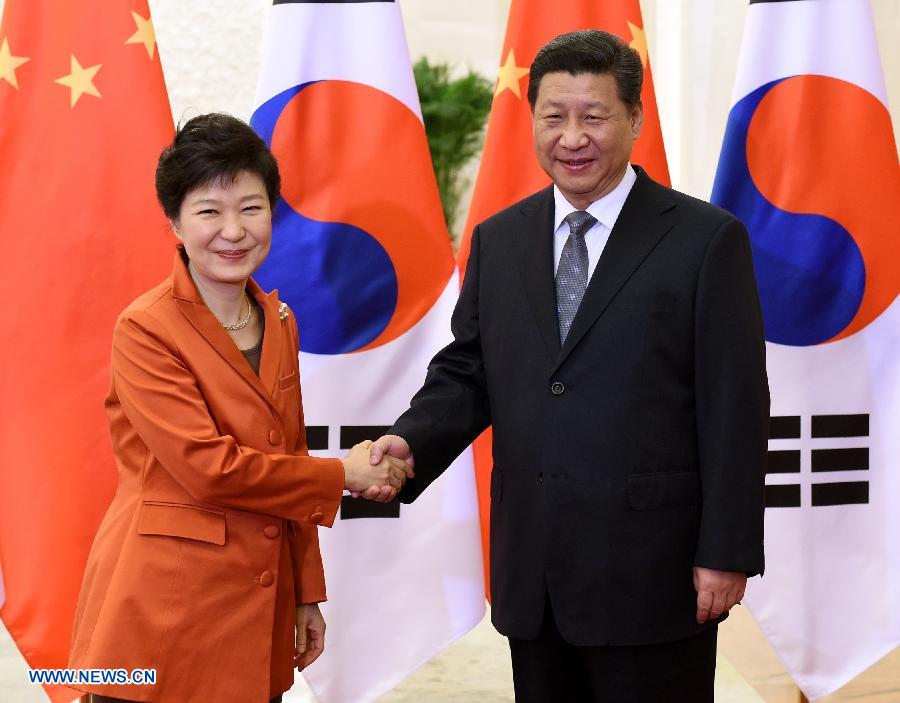5 effects of the China-ROK FTA
- By Wang Yiwei
 0 Comment(s)
0 Comment(s) Print
Print E-mail China.org.cn, March 6, 2015
E-mail China.org.cn, March 6, 2015
|
|
|
Chinese President Xi Jinping (R) meets with President of the Republic of Korea Park Geun-hye in Beijing, China, Nov. 10, 2014. [Xinhua photo] |
China and South Korea announced on Feb. 25 the signing of a draft version of a bilateral free trade agreement (FTA). Under the pact, the two sides will eliminate their import duties for 91 percent of all product categories for goods from the other side within the next 20 years. This marks the conclusion of the most comprehensive FTA that China has so far been involved in. The goal to pursue a comprehensive and high-level FTA which will strike a balance of interest with due consideration of each country has been successfully achieved.
The China-ROK FTA will greatly accelerate economic integration between the two Asian countries. It will also generate multiple strategic effects.
First, it will serve as a positive model for international negotiations. The China-ROK FTA is one of the most important FTAs signed between world major economies. The signing of the pact will play a demonstrative role in promoting the negotiations of global trade liberalization and investment facilitation rules. Instead of including the financial sector under the services chapter, the topic was set as a separate chapter for the first time. Such an arrangement will provide a good model for other FTA negotiations in the world.
It will also serve as a positive model for regional cooperation. The China-ROK FTA will generate spillover effects, urging Japan, Taiwan and other economies to accelerate or upgrade their free trade negotiations with the Chinese mainland, thus leading to a more inclusive and forward-looking Free Trade Agreement of the Asia Pacific (FTAAP). As the first free trade area agreement China has reached after the FTAAP initiative was put forward, the China-ROK FTA is expected to be an "experimental field" in moving towards the FTAAP. In the meantime, the political effect of regional cooperation is obvious. The agreement would recognize products made in the Kaesong North-South Korean Industrial Complex as South Korean, which will accelerate economic integration in Northeast Asia, promoting peace and prosperity on the Korean peninsula and in East Asia.
It will also serve as a positive model for bilateral relations between China and the Asia-Pacific allies of the United States. The pact, together with the subsequent China-Australia FTA, will have an important demonstration effect among the Asia-Pacific allies of the United States. It shows that the U.S. allies can build closer economic ties with China, or even engage in strategic cooperation with China.







Go to Forum >>0 Comment(s)